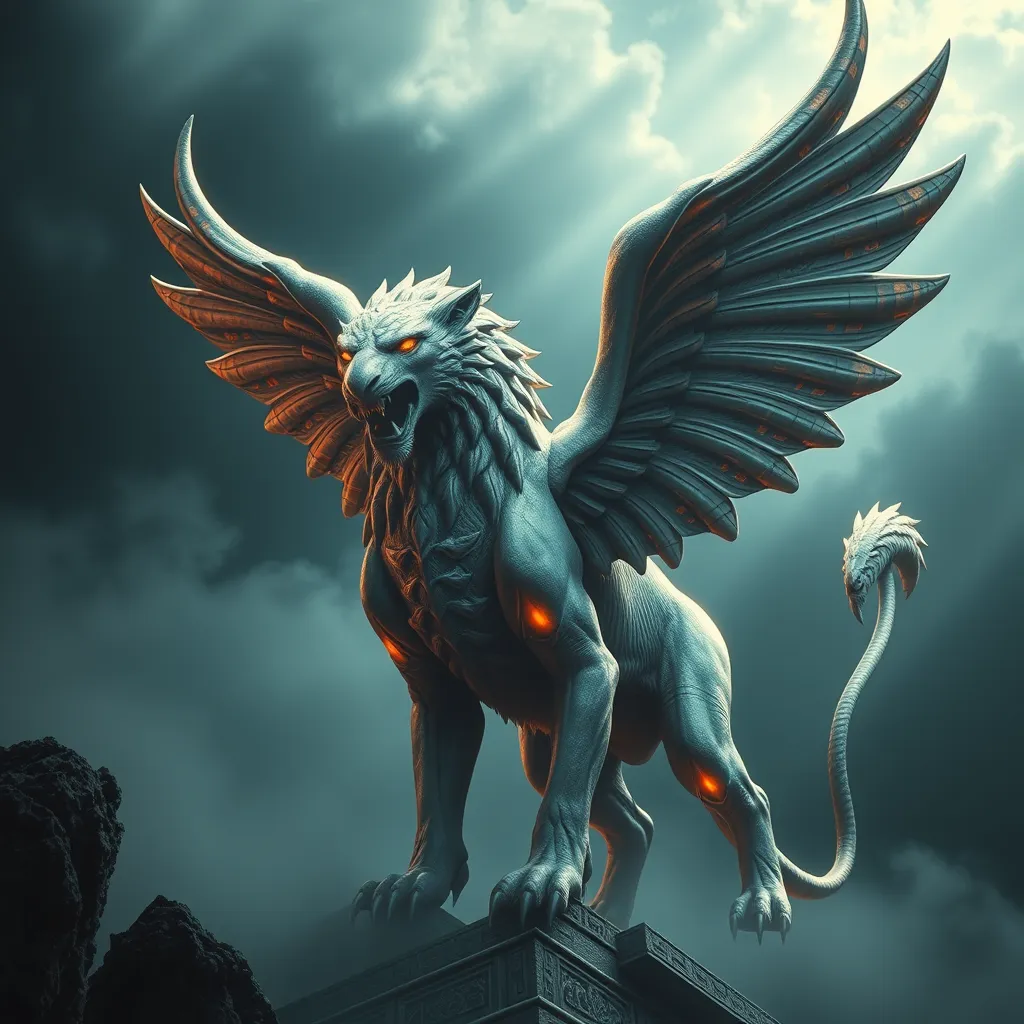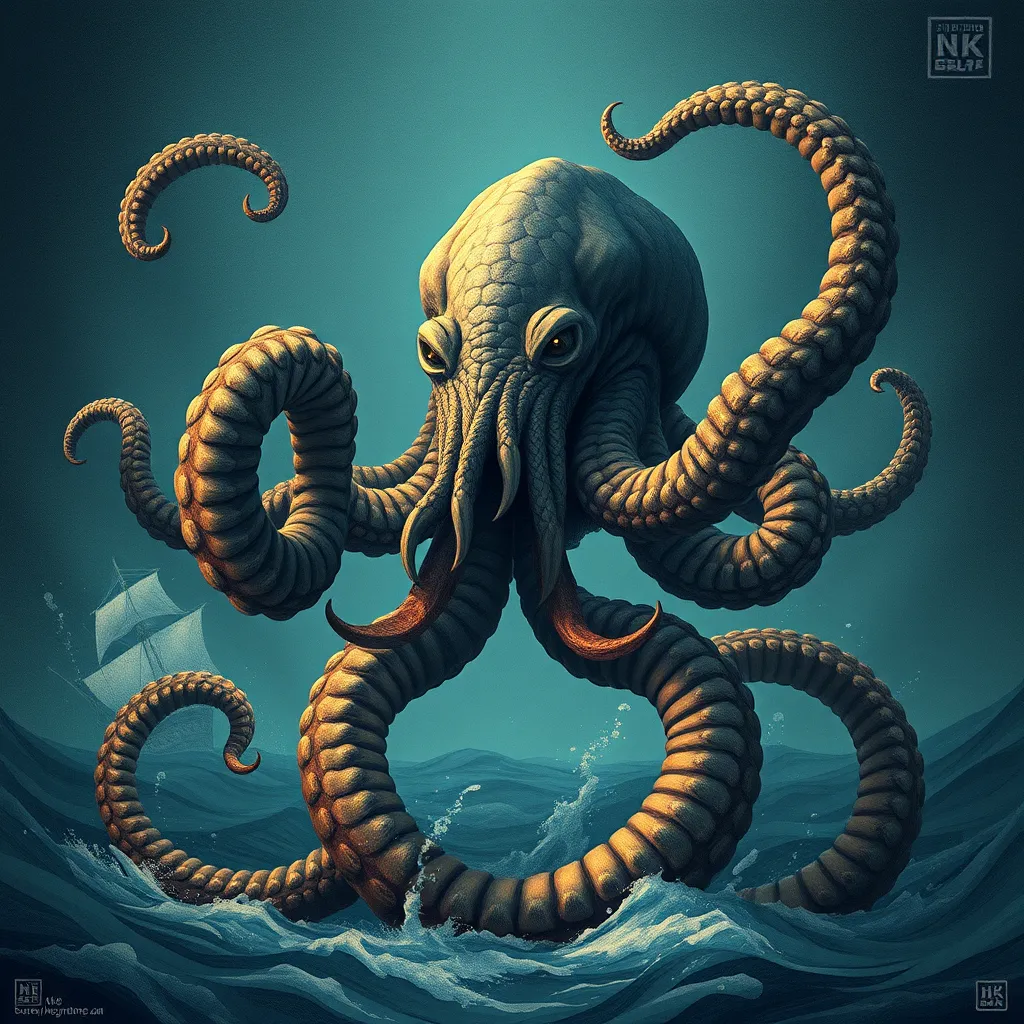The Lion-Headed Guardians: Exploring the Griffin in Greek Mythology
I. Introduction
The Griffin, a majestic creature with the body of a lion and the head and wings of an eagle, has captivated the imagination of many throughout history. This hybrid beast is often seen as a symbol of strength, courage, and protection. In Greek mythology, the Griffin holds significant importance, embodying various themes that resonate across cultures. This article aims to explore the origins, characteristics, and enduring legacy of the Griffin within Greek mythology and beyond.
II. Origins of the Griffin
The origins of the Griffin can be traced back to several ancient civilizations, with historical references found in texts from the Near East, Egypt, and Greece. Ancient Egyptians regarded the Griffin as a protector of the pharaohs and a symbol of divine power.
- Historical References: The Griffin appears in various ancient texts and inscriptions, including works by Herodotus and Homer, who describe its role in guarding treasures and sacred sites.
- Cultural Influences: The Griffin is believed to have been influenced by creatures from other cultures, such as the Mesopotamian Lamassu and the Persian Simurgh.
- Evolution of Image: Over time, the depiction of the Griffin evolved, adapting to the artistic styles and cultural significances of different eras.
III. Physical Characteristics of the Griffin
The Griffin’s unique hybrid form combines the king of the beasts, the lion, with the king of the birds, the eagle. This combination not only creates a striking visual appearance but also imbues the creature with rich symbolism.
- Description: Typically, a Griffin has the muscular body of a lion, symbolizing power and nobility, while its head and wings resemble those of an eagle, representing wisdom and vision.
- Symbolism: The lion symbolizes strength and bravery, while the eagle is often associated with divine connection and freedom, showcasing the Griffin as a guardian of both earth and sky.
- Artistic Representations: Griffins have been depicted in various forms of ancient art, including pottery, frescoes, and sculptures, often shown in dynamic poses that emphasize their grace and power.
IV. Mythological Role of the Griffin
In Greek mythology, the Griffin played a crucial role as a guardian, often associated with treasures and sacred sites. Its presence in various tales highlights its importance in the mythological narrative.
- Guardian of Treasures: Griffins were believed to guard gold and precious artifacts, particularly in the remote regions of the world, such as the land of the Hyperboreans.
- Tales and Legends: Stories of heroes encountering Griffins abound, showcasing their fierce protection of valuable treasures and their role in trials faced by heroes.
- Relationship with the Gods: Griffins were often depicted as companions of gods and demigods, reinforcing their status as divine protectors.
V. The Griffin in Ancient Greek Culture
The Griffin’s influence extended beyond mythology into the realms of literature, art, and religion in ancient Greece.
- Literature and Poetry: The Griffin appears in various literary works, symbolizing the intersection of human experience with the divine and the unknown.
- Art and Architecture: Griffins were frequently incorporated into architectural designs, such as friezes and columns, symbolizing protection and strength in public spaces.
- Rituals and Religious Practices: The Griffin was also a part of certain rituals, serving as a totem for protection and guidance in spiritual practices.
VI. Comparisons with Other Mythological Creatures
The Griffin shares similarities with other hybrid creatures in mythology, each with its unique attributes and stories.
- Similarities and Differences: Like the Griffin, the Chimera is a hybrid beast, but it combines a lion, goat, and serpent, representing chaos rather than guardianship.
- Relation to the Sphinx: The Sphinx, with its lion’s body and human head, also symbolizes mystery and knowledge, contrasting with the Griffin’s role as a protector.
- Unique Place: The Griffin occupies a unique space within the mythological hierarchy, often seen as a bridge between the divine and the mortal realms.
VII. The Griffin’s Legacy in Modern Culture
The Griffin’s legacy continues to thrive in contemporary culture, symbolizing various attributes in literature, media, and art.
- Contemporary Literature and Media: Modern fantasy literature and films frequently feature Griffins, showcasing their power and mystique in new narratives.
- Symbolism in Heraldry: The Griffin is a popular symbol in heraldry, representing strength, vigilance, and protection in various coats of arms and emblems.
- Enduring Influence: The Griffin’s image persists in popular culture, appearing in video games, merchandise, and art, demonstrating its timeless appeal.
VIII. Conclusion
In conclusion, the Griffin holds a significant place in Greek mythology as a powerful guardian and a symbol of strength and protection. Its rich history, unique characteristics, and mythological roles have left an indelible mark on art, culture, and literature throughout the ages.
The fascination with the Griffin and similar mythological creatures continues to inspire and captivate people across generations, reminding us of the enduring power of myth and the human imagination.




